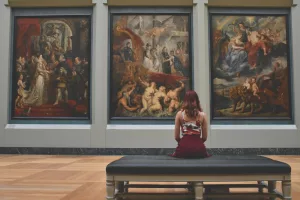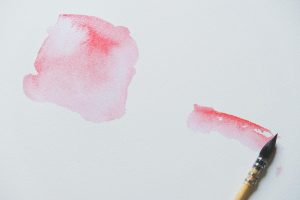Creating realistic textures in pencil drawings is a skill that combines observation, technique, and patience. When you pay close attention to details, you can elevate the realism in your art. Let’s dive deeper into the techniques and approaches that can help you achieve this.
Understanding Texture
Before setting pencil to paper, immerse yourself in the study of the texture you wish to draw. This involves more than a cursory glance; it requires a deep observation of patterns, how light and shadow dance across the surface, and the overall tactile feel. For instance, consider the texture of a rough tree bark versus a smooth glass surface. Notice how light reflects differently on each, creating distinct highlights and shadows. This observation phase is foundational, as it informs how you will approach rendering these textures in your drawing.
Case Study: Capturing Fabric
Take fabric as an example. A cotton shirt and a silk scarf both have unique textures. For cotton, you might notice a matte finish with subtle shadows in the folds, whereas silk has a glossy sheen with pronounced highlights. By studying photographs or real-life examples, you can begin to understand these differences and plan how to depict them on paper.
To illustrate, imagine sketching a crumpled cotton shirt. Focus on the slight variations in shading to depict the wrinkles, using soft, overlapping strokes to mimic the surface. In contrast, when drawing silk, you might emphasize the areas where light catches the fabric, using sharper, reflective strokes to convey its glossy nature.
Layering Technique
The layering technique is crucial for building depth and realism. Start with a base layer using light pressure to establish the general forms and shadows. Gradually, apply more pressure and introduce darker tones to simulate texture and definition.
Step-by-Step: Layering for Texture
- Base Layer: Begin with an HB pencil to sketch the outline and basic shadows.
- Intermediate Layers: Use a 2B pencil to add mid-tones, enhancing the depth.
- Detailing: Switch to a 4B pencil for deep shadows and fine details.
- Final Touches: Lightly use an eraser to lift highlights or add texture, such as in hair or fur.
By varying pressure and stroke direction, you can create diverse textures within the same drawing, adding complexity and visual interest. For instance, short, sharp strokes can mimic the texture of bricks, while long, smooth strokes are better suited for glass or water.
Use of Different Pencils
Experimenting with a range of pencils is vital. Hard pencils, like H or 2H, are excellent for detailed lines and subtle textures. In contrast, softer pencils such as B or 2B are perfect for shading and creating smooth gradients.
Example: Drawing Different Textures
- Metal: Use a combination of H pencils for precise lines and B pencils for shadows to capture the reflective quality.
- Wood: Start with an H pencil for the grain pattern, then use a 2B pencil to deepen shadows and add knots or imperfections.
- Skin: Utilize HB and 2B pencils for a soft, smooth texture, layering gradually to build the complexion and subtle shadows.
Blending Tools
Blending is a technique that can enhance the realism of your textures. Tools like paper stumps, tortillons, or even your fingers can create a seamless transition between areas, smoothing harsh lines and unifying different textures.
Practical Tip: Effective Blending
When blending, use a light touch to avoid flattening the texture. For example, when drawing skin, blend in small circular motions to maintain a natural look. A tissue can be used for larger areas to achieve a soft, even tone.
Reference Images
Using reference images is a powerful way to improve your drawing’s realism. They provide a guide for capturing the intricacies of texture and light. When selecting reference images, choose high-quality photos that clearly show the details you aim to replicate.
Example: Using References for Texture
If you’re drawing a landscape, images that highlight the texture of leaves, bark, and soil can be invaluable. Use these images to observe how light interacts with each element and replicate those patterns in your work.
Practice and Patience
Developing the ability to render realistic textures is a journey that requires both practice and patience. Experiment with different techniques, tools, and materials. Don’t be afraid to make mistakes; each one is an opportunity to learn and refine your skills.
Common Mistakes and How to Avoid Them
- Overworking an Area: This can lead to a muddy appearance. To avoid this, take breaks and step back to view your work from a distance.
- Ignoring Light Source: Always be mindful of where your light source is coming from. Consistent lighting is key to maintaining realism.
- Uniform Texture: Real-world textures are rarely uniform. Vary your strokes and pressure to reflect this variability.
Advanced Techniques
Cross-Hatching
Cross-hatching involves the use of intersecting lines to build up texture and value. This technique is particularly effective for creating detailed textures like fabric or hair. By varying the density and direction of your lines, you can achieve a wide range of effects.
Sgraffito
Sgraffito involves scratching into a layer of pencil to reveal the paper beneath, creating texture. This technique can be used to depict intricate textures like cracked surfaces or hair.
Negative Drawing
This technique involves drawing around the subject to create the illusion of light and space. For example, when drawing a subject with fine details, such as grass or fur, you can draw the shadows and let the paper become the highlights.
Exploring Realism Through Texture
The pursuit of realism in pencil art is not merely about replicating what you see, but also about interpreting it. Every texture tells a story—be it the roughness of an old wooden door or the smoothness of a polished stone. The artist’s task is to convey that narrative through their strokes and shades.
Storytelling Through Texture
Consider how you can use texture to enhance storytelling in your art. A weathered face with deep lines might suggest a lifetime of experiences, while a pristine, smooth surface could indicate something new or untouched. Each texture can add layers of meaning to your work, inviting viewers to explore beyond the surface.
The Role of Light and Shadow
Light and shadow are paramount when it comes to rendering textures realistically. They define the form and bring life to textures by creating depth and contrast.
Light Source Analysis
Before you begin, decide on a light source. This will guide where you place highlights and shadows, affecting how textures appear. For instance, side lighting can emphasize texture by casting longer shadows, while direct lighting might flatten it.
Practical Exercise: Light and Shadow
Choose a textured object and observe it under different lighting conditions. Notice how the texture changes with the angle and intensity of light. Try sketching the object multiple times, each with a different light source, to see how this affects your depiction of texture.
Tools and Materials
While the humble pencil is your primary tool, other materials can greatly enhance your ability to depict textures.
Erasers as Drawing Tools
Erasers are not just for correcting mistakes; they can be used creatively to add texture and highlights. A kneaded eraser can gently lift graphite to create soft highlights, while a harder eraser can define sharper edges and textures.
Textured Paper
Experiment with different types of paper. Cold-pressed or rough paper can add a natural texture to your drawings, which can be particularly effective for landscapes or rustic subjects.
Embracing Mistakes
Art is as much about the process as it is about the final product. Mistakes are inevitable but invaluable. They teach you what works and what doesn’t.
Learning from Errors
Keep a sketchbook dedicated to practice. Use it to experiment with new techniques and reflect on your progress. When a mistake occurs, analyze it: Was the texture too uniform? Did the shadows lack depth? Understanding these missteps will guide your growth as an artist.
Community and Feedback
Engage with a community of artists. Sharing your work and receiving feedback can provide new perspectives and ideas for achieving realistic textures.
Joining Art Communities
Consider joining online forums or local art groups. Participate in drawing challenges focused on textures. This not only hones your skills but also motivates you to push your boundaries.
Continuous Learning
The world of art is vast, and there’s always something new to learn. Attend workshops, take online courses, and watch tutorials to expand your understanding of texture and realism in pencil drawing.
Keeping an Inspiration Journal
Maintain a journal where you collect textures that inspire you—photographs, sketches, or swatches. Refer to this journal when you’re seeking new ideas or when a particular texture challenges you.
Final Thoughts
Mastering the art of creating realistic textures is a gradual process. It involves continuous learning and adaptation of new techniques. Keep pushing your boundaries and experimenting with different methods. As you develop your skills, you’ll find your unique style and voice, allowing you to create drawings that not only capture realism but also express individuality and creativity. Stay curious and enjoy the journey of artistic growth.



